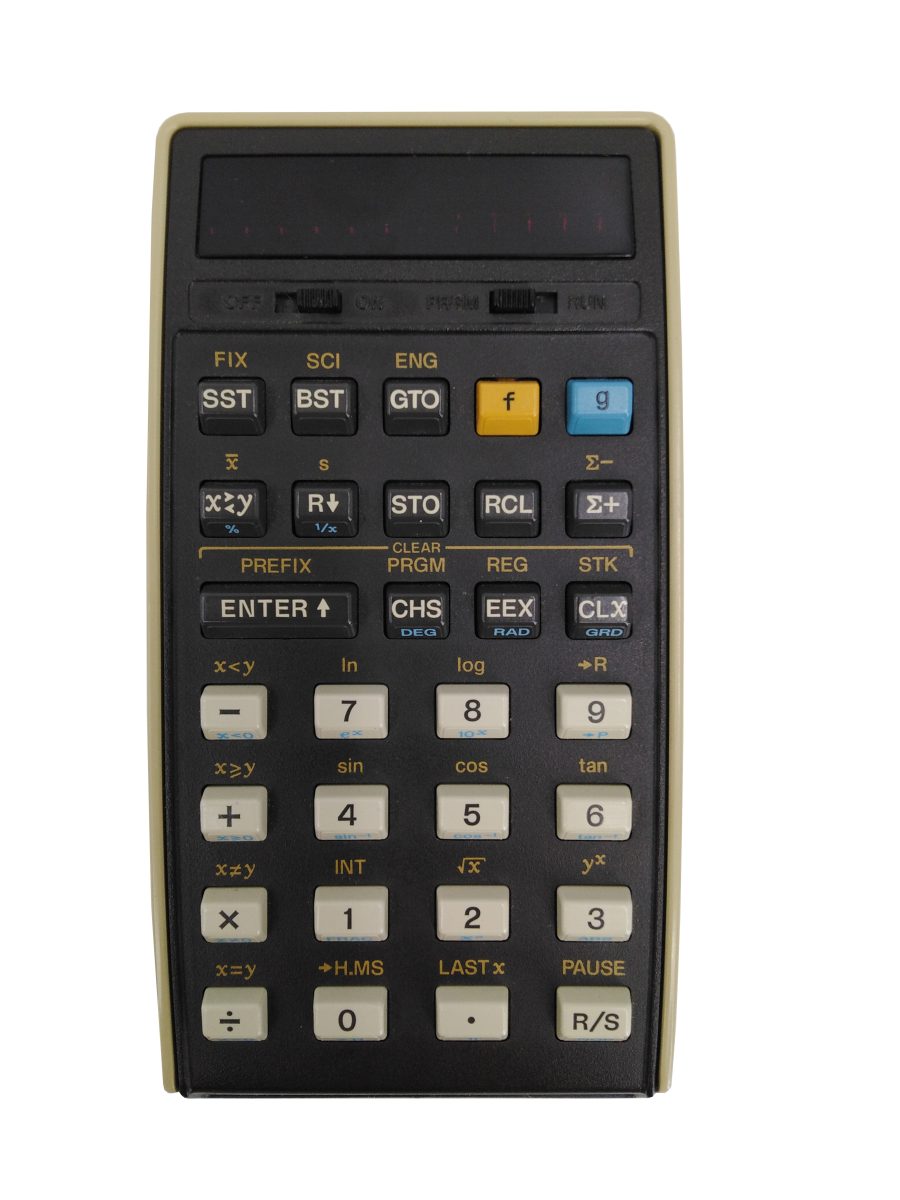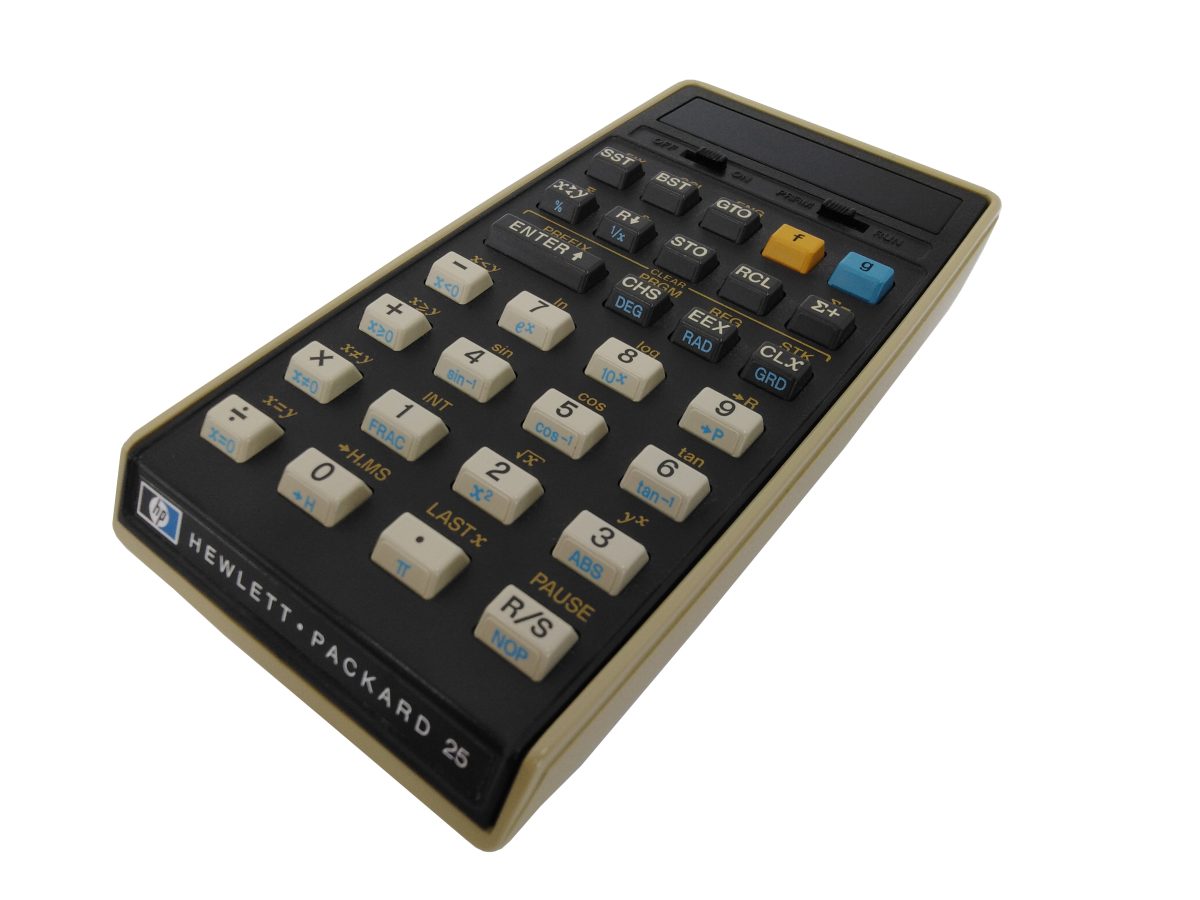HP‑25 Calculator
The HP-25 was a hand-held programmable scientific/engineering calculator made by Hewlett-Packard between early January 1975 and 1978.
HP‑25 Calculator
The HP-25 was a hand-held programmable scientific/engineering calculator made by Hewlett-Packard between early January 1975 and 1978.
To reduce cost, the HP-25 omitted the HP-65's magnetic card reader, so it could only be programmed using the keyboard. After switching off, the program was lost and had to be typed in again. The model HP-25C, introduced in 1976, addressed that shortcoming through the first use of battery-backed CMOS memory in a calculator, termed continuous memory by HP.
The HP-25 had memory space for up to 49 program steps. It was the first HP calculator which used fully merged keycodes (storing prefix key and function key together in one program location) to save memory space. Additionally there were eight storage registers and specialized scientific and statistical functions. The owner's manual came with 161 pages in four colors and contained many mathematical, scientific, navigational and financial programming examples








